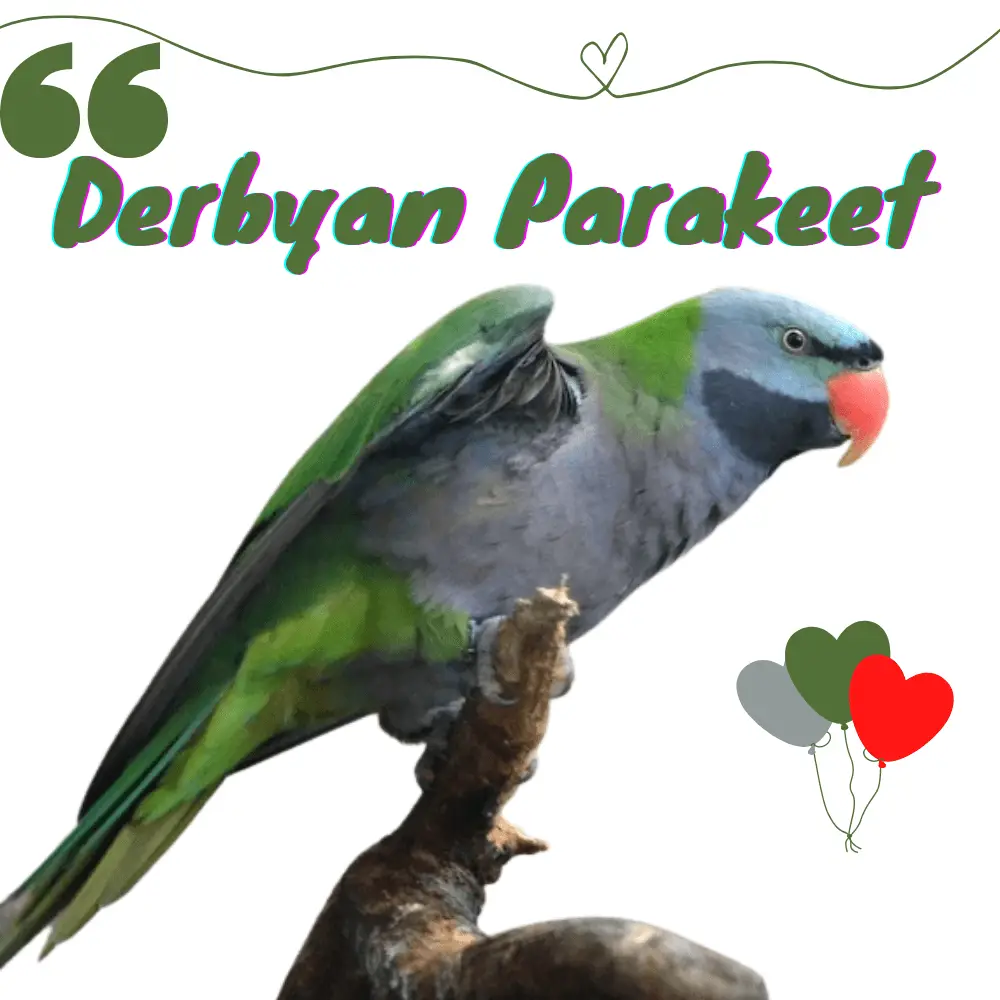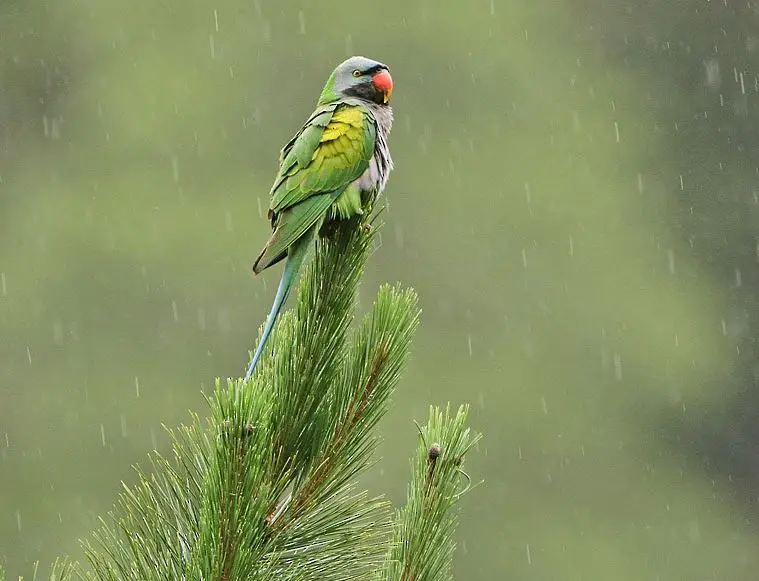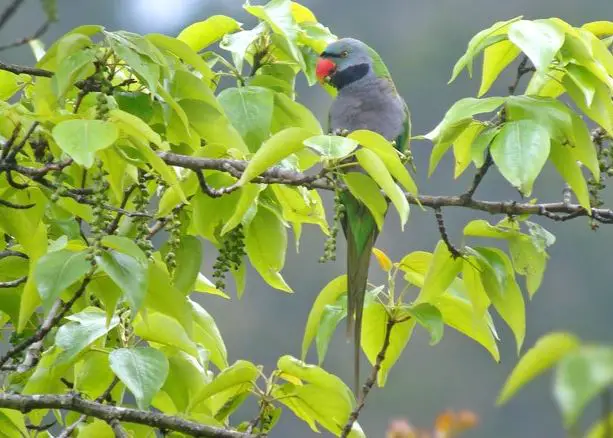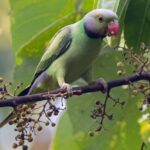
Derbyan Parakeet 46–50 cm. Bill red above tipped yellow, black below; a narrow black frontal band stretching back to eye set in light turquoise on the forehead and around the eye, shading to purple on rest of head except for broad black bar extending from lower mandible below ear-coverts;
nape and upper parts green with yellowish wash on median wing-coverts; underparts purple except for thighs and vent; tail bluish centrally, green laterally, yellowish below. The Derbyan Parakeet female lacks turquoise on the head and has an all-black bill. Immature duller, with a green head.
Systematics History
Monotypic.
SOURCE: Michael Staley
Subspecies
Monotypic.
Distribution
S China (SE Tibet and NW & W Yunnan); occurrence recently confirmed in extreme NE India (NE Arunachal Pradesh).
Habitat

Coniferous and mixed Pinus- Quercus forests, Rhododendron alpine thickets, and cultivated valleys up to 4000 m.
Movement
A summer visitor to NE India, May-Sept, but apparently resident in SE Tibet, persisting as high as 3300 m in winter.
Diet and Foraging
Seeds of Pinus tabulaeformis, poplar catkins, barley, and orchard fruit, notably peaches, and often destructive to ripening crops including maize.

Sounds and Vocal Behavior
Derbyan Parakeet Flight calls a somewhat plaintive short nasal note, “nyah”. When perched, repertoire becomes more varied but predominantly involves nasal screeches and squawks, including a drawn-out “rrraah” which has been likened to a high-pitched crow (Corvus).
Breeding
Jun in SE Tibet. Derbyan Parakeet Nest in a hole in a tree, often Populus ciliata; reportedly also in “sand nests”, presumably in high riverbanks.





















